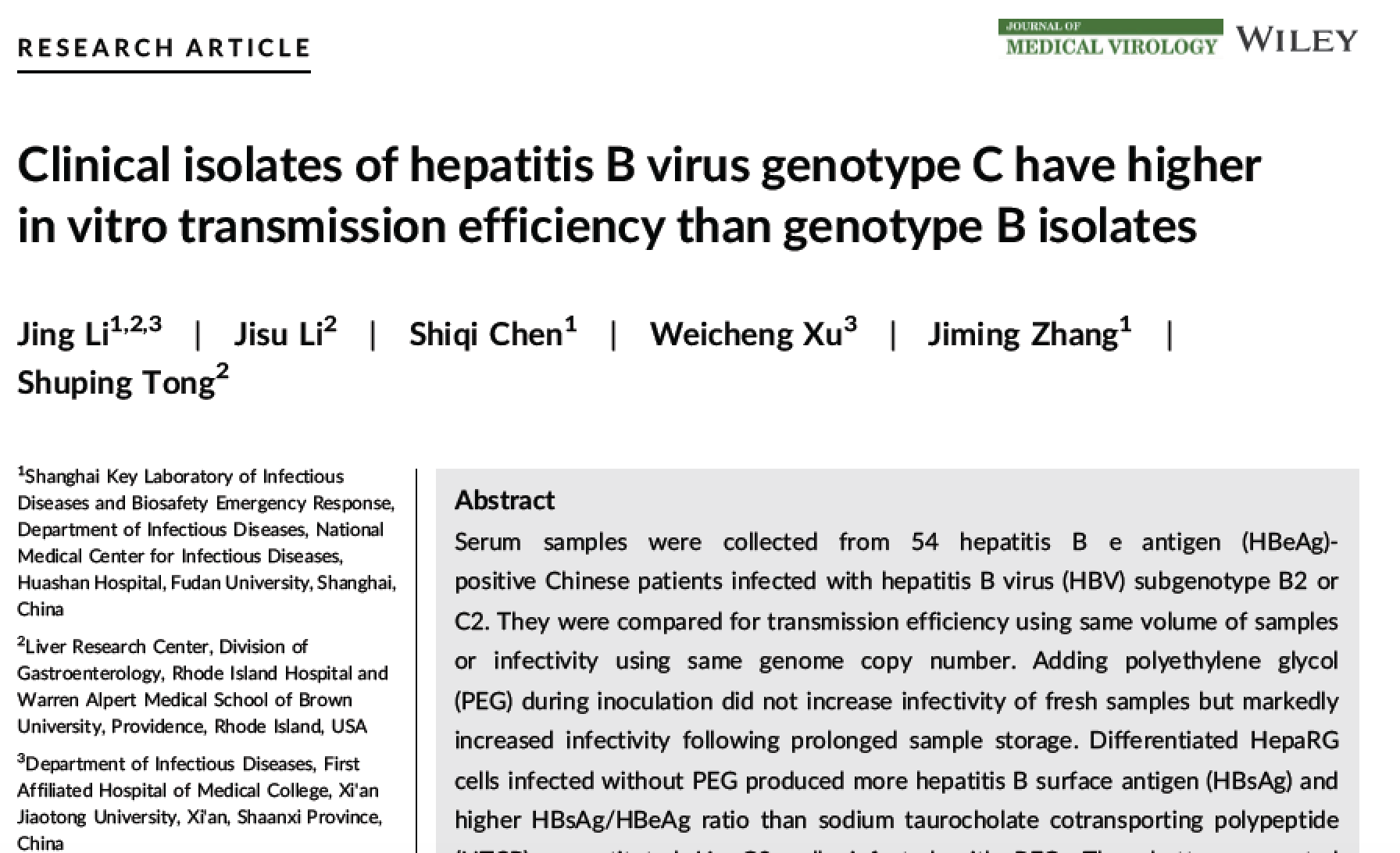Recently, Department of Infectious Diseases of the First Affiliated Hospital (FAH) of Xi'an Jiaotong University (XJTU) cooperated with Department of Infectious Diseases of Huashan Hospital affiliated to Fudan University and Liver Research Center of Brown University in the United States published the research results as a research article in Journal of Medical Virology (impact factor: 12.7). Professor Tong from Brown University and Professor Zhang Jiming from Huashan Hospital are co-corresponding authors, and Jing Li from Department of Infectious Diseases of FAH is the first author.

HBV genotypes B and C are the most common in most parts of China. Compared with genotype B, HBeAg seroconversion time of chronic infection with genotype C is delayed, which greatly increases the risk to develop cirrhosis and hepatocellular carcinoma (HCC). However, HBV genotypes B and C infection in vitro have not been reported or modelled, probably due to the low in vitro infection efficiency of HBV genotypes B and C.
In this study, serum-derived and cell culture-derived HBV genotypes B and C viruses were successfully established in HepaRG and HepG2/NTCP cell lines, and the differences of infection systems between two cell lines were compared. Meantime, the infectivity and transmission ability of HBV genotypes B and C viruses were systematically compared for the first time, demonstrating that there is no significant difference in the in vitro infectivity between these two genotypes. Nevertheless, due to higher viral load and higher mutation ratio in the basic core promoter (BCP) region and lower mutation ratio in the precure (PC) region, the transmission efficiency of HBV genotype C is higher, while the virus replication capacity of genotype B is stronger, prompting that genotype C is more likely to spread, transmit and induce chronic infection in the early stage of accidental exposure or in vivo infection. Interestingly, a few serum viruses can effectively infect HepG2/NTCP cells without polyethylene glycol (PEG), and the effective rate of infected cells decreases with the increasing freeze-thaw cycles of serum samples, suggesting that certain unstable host factors exist in the serum, which can mediate effective infection of HBV. These findings provide novel ideas for unraveling the characteristics of persistent infection and transmission of HBV genotypes B and C and elucidating underlying pathogenesis.